on education
Watch here a film footage from UNFROZEN EDUCATION - Or How To Relearn Project.
How can humans utilize their accumulated knowledge and technological achievements to nurture and protect their co-inhabitants?
Neuro-Herba-Conservatorium invites the visitors to enter barefoot into an inner space. The formation is based on the concept of an archetypical geodesic dome popularized during the 1950s by the famous futurist architect R. Buckminster Fuller. Inside the structure, herbs from the Cretan landscape can be found accompanied by essential oils from native plants prepared by local botanist Marianna Founti. The installation creates a space for being, feeling and experiencing.
The installation was presented at the exhibition UNFROZEN EDUCATION –
Or How To Relearn in Rethymno, Crete, GR.
The exhibition was curated by Yota Tsotra and Dimitra Charamandas and organised by the Museum of Education of the University of Crete.
Neuro-Herba-Conservatorium, 2019
Installation
Wood, plastic foil, Cretian herbs, pillows, wood shavings
300 x 300 x 220 cm
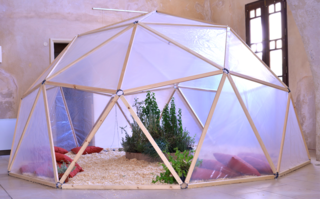
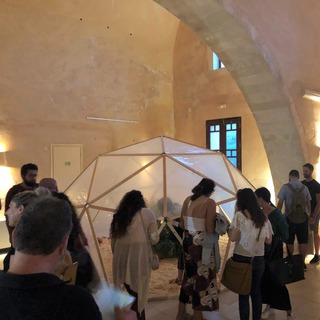
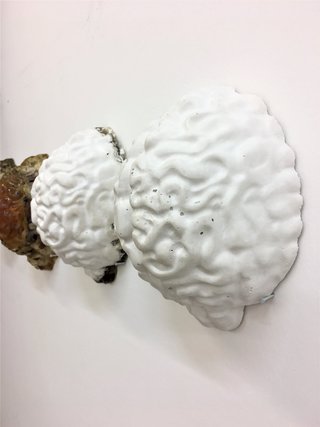
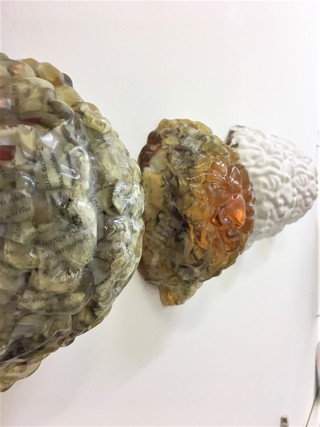
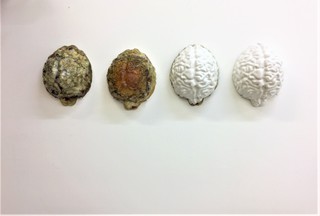
Frozen Knowledge, 2019
Installation with four brain replicas
Paper, epoxy resin, gyps
15 x 22 cm each
The brain replicas were created by embedding paper pieces from Greek school books in epoxy resin and/or gyps.
I was engaged with the question: “What happened with all we have learned and then forgotten during the endless hours of our school education? All those school books.” I imagined that this information is somehow frozen among inactive brain connections, somehow like the paper pieces are frozen within the rigid materials of the brain replicas. Although, everything looks so stiff and unchangeable, my intention is to speculate the potential and possibility of a transformation.
The installation was shown at the exhibition Hidden Jungle at the Bibliothek für Gestaltung, Münchenstein.
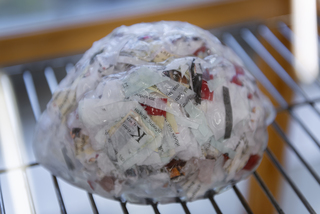
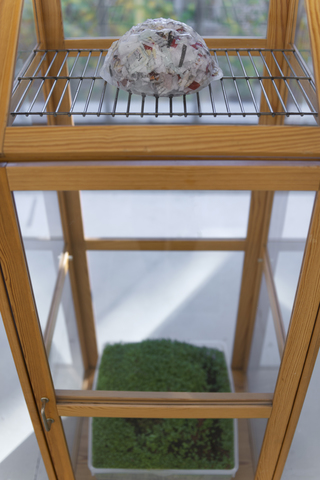
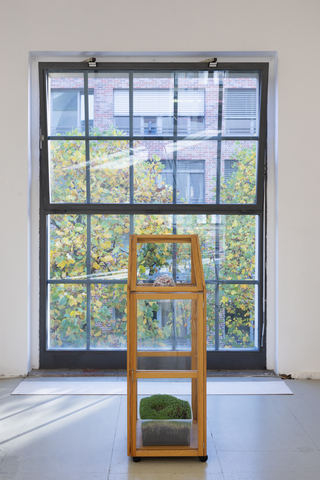
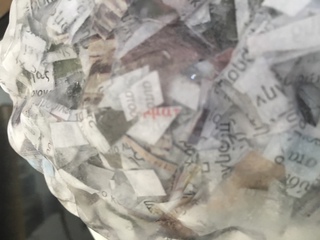
At birth, we already carry virtually all the neurons we need for the rest of our lives, even though our brain is still at only 25% of its adult size. When we first go to Kindergarten, our brain has almost reached its full size, but its development does not stop until we are 20 years old. But even later on our brain never stops changing.
Furthermore, we form at the beginning of our lives synapses between the neurons faster than ever. In fact, we produce far more synapses than we need and this allows us to learn anything much faster than adults do.
The more often a synapse is used to practice an act or to conceive an idea, the stronger the synapse becomes. This means that whatever is used often, such as speech and walking, it will be rooted in our brains since childhood, and what is neglected will disappear.
All school books. All this information. Everything we learned and afterwards forgot, it is somewhere hidden, between inactive brain synapses. And maybe so, if we let them thaw and melt, they might be able to fertilize something new. Maybe they can be transformed into something alive again.
Part of the exhibition FROZEN EDUCATION
As we melt, we grow, 2018
Paper, water, seeds, soils, glass cabinet, freezer
200 x 50 x 50 cm
JavaScript is turned off.
Please enable JavaScript to view this site properly.